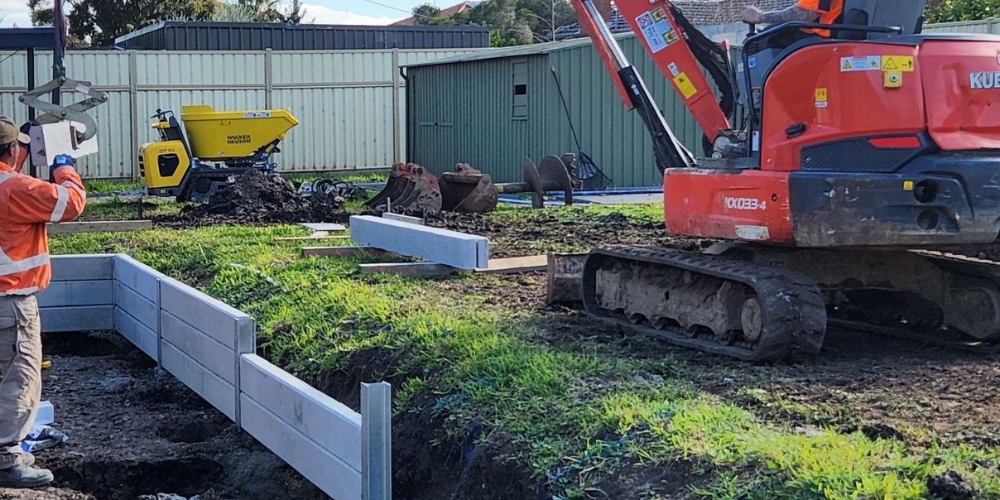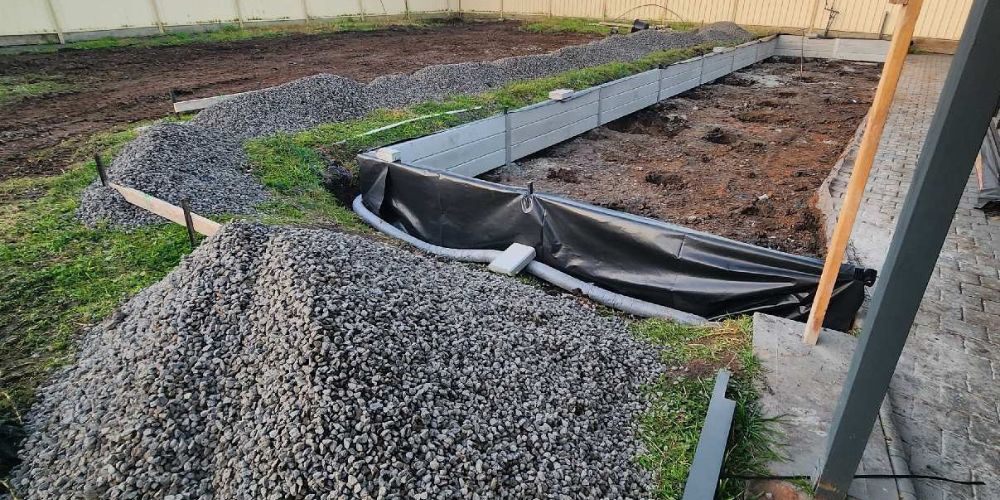Unearthing Beauty: The Role of Excavation in Your Backyard Design
Making a beautiful backyard design is similar to creating a work of art where nature and human creativity meet. Excavation, one of the most important components of landscape architecture, frequently lays the groundwork for such a comfortable haven. Excavation is, without a doubt, the foundation on which your outdoor space is constructed, even if it may not be the most glamorous component of backyard design.
The excavation creates the foundation for an aesthetically pleasing backyard and a versatile space for family gatherings, social events, and personal relaxation amidst nature.
Read further as we go into more detail about why appropriate excavation is necessary and a crucial step that may transform your backyard design from ordinary to extraordinary.

What Is Excavation?
Excavation is digging a hole in the ground. It is similar to digging a hole at the beach to construct a sandcastle, but considerably larger and for a different purpose.
People use excavation for several purposes. Sometimes, it’s to clear space for constructing homes or other buildings. They go down into the earth to form a sturdy foundation for the structure. Sometimes, it’s used to bury wires and pipelines so that we can access the internet, power, and water in our houses.
Additionally, excavation may be used to sculpt the ground at a building site or in your backyard. This assists in levelling the ground and ensuring its safety for various tasks, such as cultivating or building a garden.
Why Excavation Is Necessary in Backyard Design
Excavation may be combined with backyard design components like a puzzle to create the outdoor environment of your dreams. Excavation involves more than simply digging; it also entails reshaping the landscape to create a beautiful and useful backyard.
Let’s look at how excavation is essential for effectively fusing different design elements:
Levelling the Playing Field
Levelling the earth is one of the main goals of excavation. Your garden will be secure and easily accessible as a result. The stability and attractiveness of any patio, deck, or outdoor kitchen depend on the surface being level.
Adding Dimension and Depth
Your backyard may be given depth and dimension by excavating. You may shape the terrain with it to make slight slopes, terraces, or even retaining walls. These elements have a fantastic appearance and offer separate places for various activities.
Getting Ready for Hardscapes
Excavation is the first stage, whether you want to build a paved walkway, a pool, or a fire pit. It creates the room required for these hardscape components and guarantees their placement on a sturdy base.
Enhancing Drainage
Drainage problems may be resolved with proper excavation. You may avoid erosion and waterlogging in your backyard by shaping the earth to direct water away from your house and into designated drainage zones. This will keep your backyard dry and lush.
Opportunities for Planting
Plant beds and garden areas can be made by excavation. Your garden may be made more colourful and lush by digging out particular places and adding the proper soil by creating pockets for plants, bushes, and even trees.
Privacy and Screening
Natural screens and privacy elements may be made by excavating. By excavating small depressions or berms, you may carefully arrange shrubs or trees to block prying eyes from your outside space.
Fixing Grading Problems
Your backyard may occasionally have grading issues that need to be fixed. To guarantee that water drains away from your property and avoid foundation and basement problems, excavation might re-grade the terrain.
Incorporating Water Features
For your backyard to have the peaceful pond, cascading waterfall, or meandering stream of your dreams, excavation is necessary. Additionally, it facilitates their connection to a water supply and guarantees correct water circulation.

Safety Considerations
Safety is the utmost priority when it comes to excavation in your backyard. Whether undertaking a DIY project or hiring professionals, keeping yourself and others safe should always be a top priority. Here are some crucial safety considerations to keep in mind:
Locating Utilities
Before digging, always find and mark the locations of underground facilities, such as gas lines, water pipelines, and electrical wires. You may contact your local utility providers. Striking them might result in terrible accidents and interruptions of service.
Trench Security
Follow the recommendations for trench safety if your excavation incorporates them. Use protection devices like trench boxes, sloping, or benching to avoid cave-ins since trenches might abruptly collapse. Never step foot into an exposed trench.
Personal Protective Equipment (PPE)
Ensure that every employee wears the proper PPE, such as steel-toed boots, hard helmets, safety glasses, earplugs, and gloves. PPE aids in preventing injuries and potential risks.
Equipment Safety
To avoid failures and malfunctions that might result in accidents, excavating equipment has to be regularly inspected and maintained. To operate heavy machinery safely, operators need to be trained and qualified.
Access Control
Use cones, signage, or barriers to clearly define and regulate access to the dig site to keep intruders out. This serves to protect onlookers from injury.
Emergency Procedures
Have a clear emergency plan in place in case of mishaps or injuries. This should include access to first aid items on-site and a fast way to get medical help.
Protective Systems
Apply the proper safety measures, such as shoring, sheltering, or sloping, depending on the depth and kind of excavation, to avoid soil collapse. The safety of the workforce depends on these systems.
Frequently Asked Questions
The necessity for a permit is determined by local legislation and the extent of your project. Minor excavations may not require permission, although bigger ones frequently do. It’s critical to check with your local authorities to determine the precise regulations in your region.
Yes, excavation may have a big influence on drainage. Proper grading and contouring during excavation can assist in moving water away from your property, preventing waterlogging and erosion problems.
For assistance, consult with your excavation contractor or a specialist. They can analyse the problem and make suitable recommendations, such as changing the project design or utilising specialist equipment.
Eco-friendliness should be promoted, soil erosion should be minimised, sustainable landscaping methods should be used, and local environmental standards should be followed. Consider rainwater collecting, native plants, and responsible disposal of excavated debris.
Conclusion
Excavation is similar to the first stage in creating your ideal backyard. It’s not just about digging a hole; it’s about preparing the ground in your yard for all of the fun things you want to do there.
Excavation is the backstage team that makes the performance happen, from making the ground smooth and flat to preparing it for things like a patio, a garden, or a play area. But here’s the key point: always keep safety in mind. Following safety guidelines keeps everyone safe and sound, whether you perform the work yourself or hire specialists.
Consider excavation as the foundation for all the fun and beauty you want to build in your garden. It’s where your outdoor experiences begin, where you’ll create memories with friends and family, and where the outdoors’ enchantment comes to life.
So, whether you’re planning a gorgeous garden, a hangout location for friends, or a play area for children, remember that excavation is where it all begins. Take pleasure in every step of building your ideal garden!
